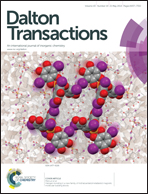Phase evolution and microwave dielectric properties of xBi2/3MoO4–(1 − x)BiVO4 (0.0 ≤ x ≤ 1.0) low temperature firing ceramics
Abstract
In the present work, a full range of compositions of xBi2/3MoO4–(1 − x)BiVO4 (0.0 ≤ x ≤ 1.0) was prepared by the solid state reaction method. All the ceramic compositions could be readily densified to below 850 °C. As the x value increased, the monoclinic scheelite structure continuously changed to a tetragonal structure at x = 0.10, which means the ferroelastic phase transition temperature was lowered to near room temperature. In the compositional range 0.50 ≤ x < 0.70, a novel ordered scheelite phase was formed, most likely through A-site vacancy ordering. For compositions x ≥ 0.70, a composite two-phase region consisting of the ordered scheelite and Bi2/3MoO4 phases was formed. High microwave permittivity around 75 and Qf values around 8000 GHz could be obtained in the compositions near the phase boundaries between monoclinic and tetragonal scheelite phases. The intrinsic microwave dielectric properties were extrapolated from the far infrared reflectivity spectra, and it was found that the polarization was dominated by the Bi–O stretches when x ≤ 0.10.


 Please wait while we load your content...
Please wait while we load your content...